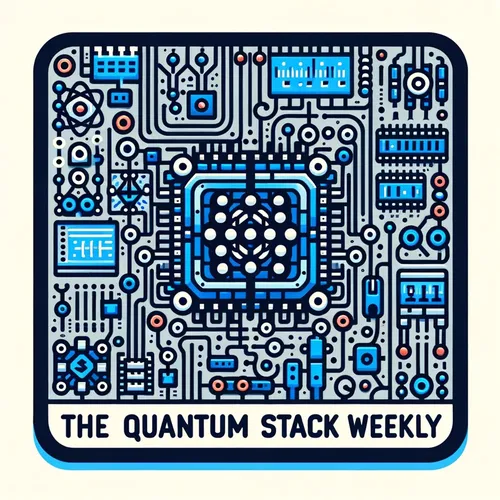Quantum Error Correction Leap: Terra Quantum's QMM Booster Unleashes Next-Gen Computing Potential
- Author
- Quiet. Please
- Published
- Fri 15 Aug 2025
- Episode Link
- https://www.spreaker.com/episode/quantum-error-correction-leap-terra-quantum-s-qmm-booster-unleashes-next-gen-computing-potential--67378521
This is your The Quantum Stack Weekly podcast.
I’m Leo, your Learning Enhanced Operator, and today on The Quantum Stack Weekly, I’m skipping the pleasantries—because something monumental just dropped yesterday in quantum error correction, and it’s too thrilling not to dive right in.
Imagine a world where quantum computers finally shake off the shackles of errors that have kept them teetering on the edge of practical usefulness. That world crept much closer last night, when Terra Quantum published a breakthrough: QMM-Enhanced Error Correction. Think of it like a cosmic trick borrowed from the strange warp and weft of spacetime itself. Typically, error correction in quantum processors is a bit like patching potholes while speeding down the highway—slow, clumsy, and resource-hungry. Enter the QMM, or Quantum Memory Matrix: a concept adapted from quantum gravity, now successfully implemented into real quantum circuits and validated on IBM’s superconducting hardware.
Here’s where it gets dramatic. The QMM works as a lightweight, plug-and-play “booster” layer—no costly mid-circuit measurements, no extra gates, just pure error-suppression magic. Picture it: up to 35% error reduction, directly at the circuit level, no architectural redesign required. It’s analogous to introducing a tensor core for quantum hardware—suddenly, every operation hums with more fidelity and less quantum “static.” This isn’t theory—it’s running on real hardware as of today.
Why does it matter? Traditional error correction schemes, like surface codes, need enormous overhead—lots of extra physical qubits and computational steps for every logical calculation. But QMM sidesteps that, meaning deeper algorithms, bolder experiments, and faster development cycles in quantum chemistry, logistics, or machine learning, all without a hardware overhaul. Florian Neukart of Terra Quantum put it succinctly: “QMM-enhanced error correction works out of the box… For industries building quantum solutions now, not in 10 years. This is a game-changer.”
I liken it to current events—the world moving at quantum pace, geopolitics shifting across Saudi Arabia and South Korea as global firms scale up quantum manufacturing, and the United Nations marking 2025 as the International Year of Quantum Science. Just as nations must adapt or be left behind, so too must every quantum developer who wants to stay in the race.
Walking into a quantum computing lab today, there’s a hush, but it’s an electric one—every operator knows these new architectural “boosters” will amplify research, speed up development, and change how we think about what’s computationally possible, much like the first CPUs forever changed digital life. Quantum isn’t just observing the uncanny reality of superposition and entanglement anymore—it’s actively carving new physics into our problem-solving arsenal.
That’s all from me, Leo. If you have questions, or there’s a topic you want me to unpack on air, drop me a line at [email protected]. Don’t forget to subscribe to The Quantum Stack Weekly for your front-row seat to the future—this has been a Quiet Please Production, and for more info, check out quietplease.ai.
For more http://www.quietplease.ai
Get the best deals https://amzn.to/3ODvOta
